Introduction
In mushroom cultivation, contamination is one of the biggest obstacles. Setting up a sterile workspace helps prevent mold, bacteria, and other contaminants from interfering with your mycology projects. This guide provides step-by-step instructions, essential tools, and maintenance tips to help you create a sterile environment, ensuring successful cultivation. From beginners to advanced cultivators, everyone can benefit from a properly maintained sterile setup.
1. Importance of a Sterile Workspace in Mycology
Setting up a sterile environment helps keep unwanted contaminants from overtaking your mushroom cultures and ruining your progress. Here’s why sterility is critical in mycology:
- Contamination Prevention: Mushrooms are delicate and can be easily overtaken by bacteria, mold, and yeast. A sterile workspace reduces the chance of exposure.
- Successful Growth: Cultivating mushrooms in a clean environment improves the likelihood of growth without interference.
- Reduced Resource Wastage: By minimizing contamination, you reduce the need to throw out infected cultures, saving time and materials.
2. Choosing the Right Workspace
To create an optimal sterile workspace, follow these guidelines:
-
Location Selection:
- Closed-Off Space: Select a small room with a door, such as a basement corner, spare bathroom, or closet.
- Avoid Kitchens or Bathrooms in Use: These areas have high humidity and many airborne particles, which increase contamination risks.
- Reduce Traffic: The less traffic in and out of your workspace, the fewer particles and contaminants are introduced.
-
Cleaning and Prepping the Space:
- Wipe Down All Surfaces: Use a bleach solution (10%) or isopropyl alcohol (70%) on all surfaces, including countertops, tables, and any nearby furniture.
- Vacuum or Mop the Floor: Reduce dust and particles on the floor to help keep your workspace clean.
- Remove Non-Essential Items: Keep the workspace clutter-free, as extra objects collect dust and particles that can lead to contamination.
-
Controlling Airflow:
- Shut Windows, Doors, and Vents: This minimizes air movement, preventing airborne contaminants.
- Turn Off Fans and Air Conditioners: These increase airflow and can carry dust and microbes into the workspace.
3. Essential Tools and Equipment for Sterility
The right tools make it easier to maintain a sterile environment, allowing for effective and safe mycology work.
1. Still Air Box (SAB)
- Purpose: A still air box is a simple tool designed to reduce airflow, so spores and contaminants don’t get into your cultures.
- Setup: Use a clear, plastic storage box with two armholes cut into the sides. Place it in your workspace and arrange your supplies inside before closing the lid.
- Tips: Frequently disinfect the inside with alcohol spray and use gloves while working to further reduce contamination.
2. Laminar Flow Hood
- Purpose: A laminar flow hood uses a HEPA filter to create a steady flow of filtered air over your workspace.
- Setup: Position your tools, agar plates, and other materials directly in front of the hood to ensure they stay within the sterile airflow.
- Tips: Clean the HEPA filter periodically for the best results. This tool is more advanced but excellent for frequent growers.
3. Sterilization Tools
- Alcohol Burner or Torch: Essential for flame-sterilizing tools like scalpels and inoculation loops between uses.
- UV-C Light (Optional): Can help sterilize surfaces in your workspace but should be used cautiously, as UV-C light can be harmful if not handled properly.
- Autoclave or Pressure Cooker: If you sterilize materials at home, these devices provide high-temperature steam that effectively kills contaminants.
4. Disinfecting Solutions and Sprays
- Isopropyl Alcohol (70%): The standard for sterilizing surfaces, tools, and gloves; apply before and after each use.
- Bleach Solution (10%): Ideal for disinfecting large surfaces; however, it should be used with caution to avoid damaging sensitive tools or materials.
5. Personal Protective Gear
- Disposable Gloves: Protects your cultures from bacteria and oils on your hands. Change gloves frequently or spray them with alcohol as needed.
- Face Masks: Prevents contaminants from your breath from reaching the cultures.
4. Setting Up Your Sterile Workspace: Step-by-Step
Step 1: Clean and Disinfect Surfaces
- Spray down all surfaces with isopropyl alcohol or a bleach solution. Be thorough, wiping down countertops, tables, and tools.
- Let the surfaces dry completely before you start working to ensure maximum sterilization.
Step 2: Arrange Tools and Materials for Easy Access
- Place all necessary tools inside your still air box or in front of your flow hood. Keeping tools within reach reduces unnecessary movement and minimizes contamination risks.
- Organize items such as scalpels, syringes, and agar plates to make the workflow smooth.
Step 3: Create a Sterile Workspace
- Using the Burner or Torch: Flame-sterilize metal tools (scalpels, loops) by holding them in the flame until they glow red.
- Spraying Gloves and Tools: Before you begin, spray your gloves and tools with 70% isopropyl alcohol, ensuring no contaminants remain.
- Limit Movements: Once you begin working, avoid unnecessary movement that can introduce contaminants. Use smooth, controlled motions.
Step 4: Practicing Good Sterile Techniques
- Hand Positioning: Keep hands steady and within the sterile environment of your SAB or flow hood.
- Avoid Talking and Moving: Talking and moving too much can introduce airborne particles, so work quietly and efficiently.
Step 5: Proper Disposal and Cleanup
- Dispose of gloves, paper towels, and any disposable tools carefully to avoid spreading contaminants.
- Clean and wipe down all surfaces again after finishing to prepare for the next use.
5. Maintaining Your Sterile Workspace
To ensure your workspace remains effective over time:
- Replace HEPA Filters in Flow Hoods: Follow the manufacturer’s instructions to replace filters regularly.
- Regularly Wash Reusable Tools: Clean scalpels, tweezers, and containers thoroughly between uses.
- Inspect for Dust and Debris: Wipe down surfaces and remove dust as often as possible.
6. Common Mistakes to Avoid
- Touching Non-Sterile Surfaces: Once you touch an outside surface, disinfect your gloves again to avoid introducing contaminants.
- Cluttered Workspaces: Only include essential items in your workspace; too many tools can lead to contamination risks.
- Improper Disposal of Waste: Always dispose of used gloves and paper towels immediately after use.
Conclusion
Setting up a sterile workspace is a critical step for success in mushroom cultivation. By following these guidelines, you can create an effective and clean environment for your mycology projects.

